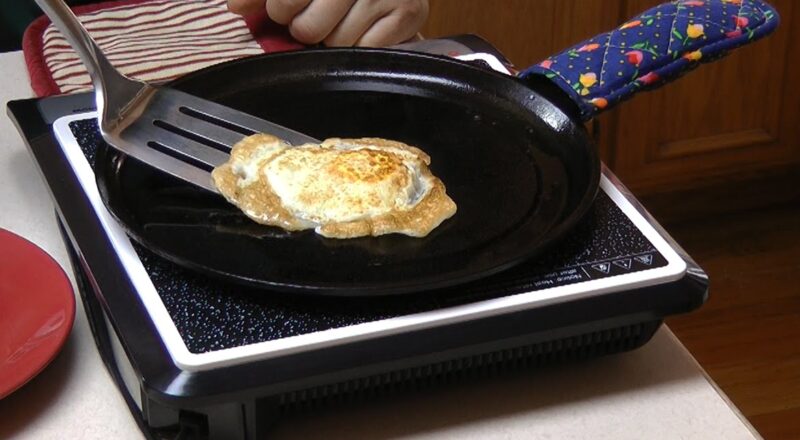In the culinary world, few tools are as revered as the cast iron pan. Known for its durability and excellent heat retention, it is a staple in both home and professional kitchens. However, understanding how to handle hot cast iron pans is crucial for safety and optimal cooking results. In this article, we will explore the best practices for safely handling these versatile kitchen allies.

Understanding Cast Iron Cookware
Before diving into how to handle hot cast iron pans, it’s important to understand why they get so hot and why thats beneficial. Cast iron is known for its ability to hold heat. This makes it excellent for searing meat to perfection or baking cornbread with a crispy crust. However, this same property can pose a risk if not handled correctly.
Benefits of Cast Iron
- Heat Retention: Maintains consistent temperature, ideal for even cooking.
- Versatility: Suitable for stovetop, oven, or even campfire cooking.
- Durability: Can last a lifetime with proper care.
Safety Tips for Handling Hot Cast Iron
Using the Right Tools
When dealing with a hot cast iron pan, always use appropriate tools. Silicone or cloth handle covers can protect your hands from burns. Additionally, using a pair of heat-resistant gloves can offer further protection.
Proper Handling Techniques
Always lift the pan with care. Use both hands, gripping it securely with a towel or pot holder, ensuring you have a firm grip. Never try to move a hot pan with wet hands or a damp towel as steam burns can occur.
The Importance of Pan Maintenance
Seasoning Your Pan
Seasoning is vital for both performance and safety. A well-seasoned pan will have a natural non-stick surface, reducing the need for excessive oils and fats, which can splatter and cause burns.
Cleaning and Storage
After using your hot cast iron pan, let it cool slightly before cleaning. Avoid using soap; instead, scrub with a brush and rinse with hot water. Dry thoroughly and apply a light layer of oil to prevent rust.
Common Challenges with Cast Iron
Handling Uneven Heating
Sometimes, cast iron pans can heat unevenly. Understanding how to manage these cold spots can improve your cooking results. Make sure your heat source is appropriate for your pan size.
Preventing Smoky Kitchens
When using cast iron, kitchens can become smoky. This can be managed by ensuring your pan is properly seasoned and using the right cooking oils at appropriate temperatures. Check out why your pan might be becoming smoky and how to prevent it.
Advanced Tips for Professionals
Mastering Temperature Control
Professional chefs often use cast iron for its superior heat retention. Mastering temperature control is essential. Preheat your pan before adding food to ensure even cooking and prevent sticking.
Utilizing Induction Cooktops
With the rise of induction cooking, it’s essential to understand how cast iron performs on these surfaces. For a deeper dive into this topic, visit this guide on induction cooktops.

FAQs
How do I know when my cast iron pan is hot enough?
To test if your cast iron pan is ready, sprinkle a few drops of water on the surface. If they sizzle and evaporate immediately, the pan is hot enough.
Can I use soap on my cast iron pan?
While traditional advice suggests avoiding soap, modern dish soaps are mild enough not to strip seasoning. However, it’s best to use minimal soap and rinse thoroughly.
What oils are best for seasoning?
Flaxseed oil, canola oil, or vegetable oil are excellent choices for seasoning due to their high smoke points and ability to polymerize well.
For more insights on matching pan sizes with heating sources, you might consider exploring this article.
This article contains affiliate links. We may earn a commission at no extra cost to you.

